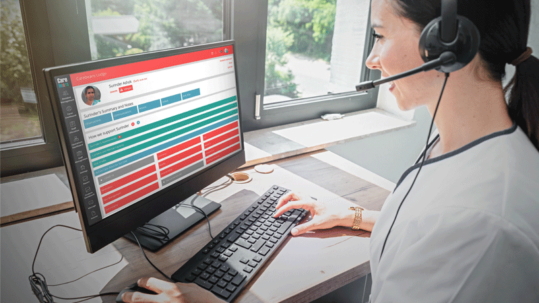RISK TAKING AND ASSESSMENT POINTS COVERED INCLUDE:
• Why risk assess?
• Identifying hazards.
• Who may be harmed, and how.
• Evaluating risks.
• Risk reduction.
• Record keeping.
Focus on: service users
Service users are particularly vulnerable to risks due to disability and increased needs. Some people in your health services will have reduced ability to manage their own risks. This is why it is essential to carry out assessments in order to keep users safe. By identifying hazards that could cause harm, you will then be able to put actions in place to minimise these risks.
Five steps to risk assessment
Step 1: Identify hazards in the care home, or as part of day-to-day or social care i.e. anything that may cause harm.
Hazards and risks will vary between users.
A hazard is anything that can cause harm e.g. a chemical, electricity, blocked corridor
A risk is how great the chance that someone will be harmed by the hazard
To identify hazards and risk, you should use these techniques:
Care planning: when planning day to day care, think about what risks there could be for that particular area of support e.g. slipping, choking, falling etc. These should then be reviewed periodically.
Ask the appropriate people: the user/family may have concerns about what might risk their safety.
Review accident records: look for accident and incident patterns that may highlight risks and measures needed to be taken.
Observation: have a look around the home and see what hazards and risks there might be.
Step 2: Decide who may be harmed, and how
We are focussing today on service user risks. However certain risks may also impact on staff, visitors etc. For example, if there is a COVID risk, then other service user’s and staff will be at risk too.
Step 3: Evaluate the risks and take action to minimise these
Examples of minimising risk may be staff training, improved housekeeping, regular reviews, implementing aids such as mobility aids, implementing infection control procedures, increased support etc.
A 5 x 5 matrix tool that looks at the impact of a risk versus the likelihood of anything happening helps to give a risk score level.
Step 4: Make a record of the findings
It is essential to record all risk assessments within the appropriate care plan. This will demonstrate that your decision making and service provides safe care to your users.
Your risk assessment records should show that you:
Identified the risk, including level of risk, and details of the assessment
Identified who the risks might affect e.g. the service user and any other service users, staff, visitors etc.
Identified the triggers and what actions you need to put in place to eliminate or reduce the risk as much as possible.
All risk assessments should include the service user/advocates input, and demonstrate they were involved in the risk assessment.
Step 5: Review the risk assessment regularly
You need to review the risk assessments periodically to ensure the measures put in place are working.
Think about:
• Have there been any accidents or near misses reported?
• Are the measures in place effective?
• Could further improvements be made?
• Are all staff up to date in any relevant training?
Have there been any changes in the home, or to the service users day-to-day care that may mean a new or improved risk assessment is needed?
Summary
Following these five steps enables you to complete thorough assessments and implement effective risk management safety measures. It ensures you are compliant in meeting the requirements of the Inspectorate, and most importantly that you are keeping your service users safe.
Note: you can also use other tools in conjunction with the risk assessment. For example, a Waterlow Score to identify the risk of pressure areas/ulcers; a MUST tool to identify risk of malnourishment; a Falls Risk to identify risk of falls etc.
You can incorporate any guidance given by these tools into the risk assessment.
It is good practice to have clear and specific risk assessments in place within the care plans so that you can demonstrate easily and quickly that a robust plan is in place to minimise any risks that may cause harm to the service user.
WATCH OUR RISK TAKING AND ASSESSMENT FOR SERVICE USERS WEBINAR ON OUR YOUTUBE CHANNEL
Examples of Risk Assessments in Health and Social Care – Sally Webb
COVID 19 Care Plan – hospital visit infection risk; distress risk due to COVID swabbing
Eating & Drinking Care Plan – malnutrition risk (incorporating MUST recommendations); choking risk
Falls Care Plan – falls risk
Medication Care Plan – allergy to penicillin risk
Washing and Dressing Care Plan – slipping in bathroom risk
The Carebeans range of products consists of:
Care Planning System for care homes
Domiciliary Care Software
Staff Rota Software
Time and Attendance software
Call 01925 386800 or request a free demonstration:


